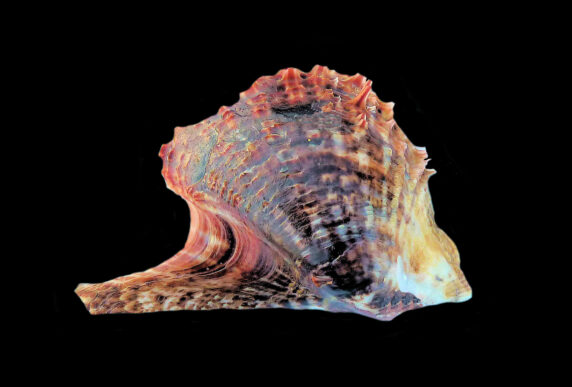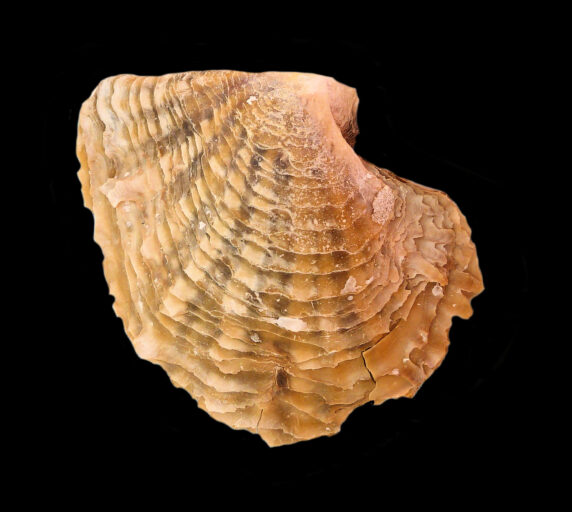Pearl Oyster Shells in the Pteridae Family
Two Pearl Oysters of the Pteridae Family can be found in this website:
Pearl Oysters are bivalve mollusks of the Pteridae Family are also known as Winged Oysters, Feather Oysters or Mother of Pearls. They have a rounded outline with a long flat hinge line that extends as “wings” on both sides of the hinge. These shells are inequivalve (both valves are not equal in size and shape), with the lower valve having an opening for the byssus which is utilized to attach to the substrate. These shells are thin and fragile. The exterior surface may be smooth or covered with thin overlapping plates and the interior is nacreous (having an iridescent luster).
The Pearl Oysters are suspension feeders, filtering plankton and fine detritus from the surrounding water. In turn they are preyed upon by crabs, predatory mollusks and sea stars. Pearl Oysters are found primarily in warm water intertidally attached to rocks and mangrove roots, as well as in deep water attached to gorgonians and black coral branches.
There are sixty species in the Pteridae Family of which two are found along the coastlines of the Baja Peninsula. These oysters produce the pearls that have been so highly valued throughout human history.


